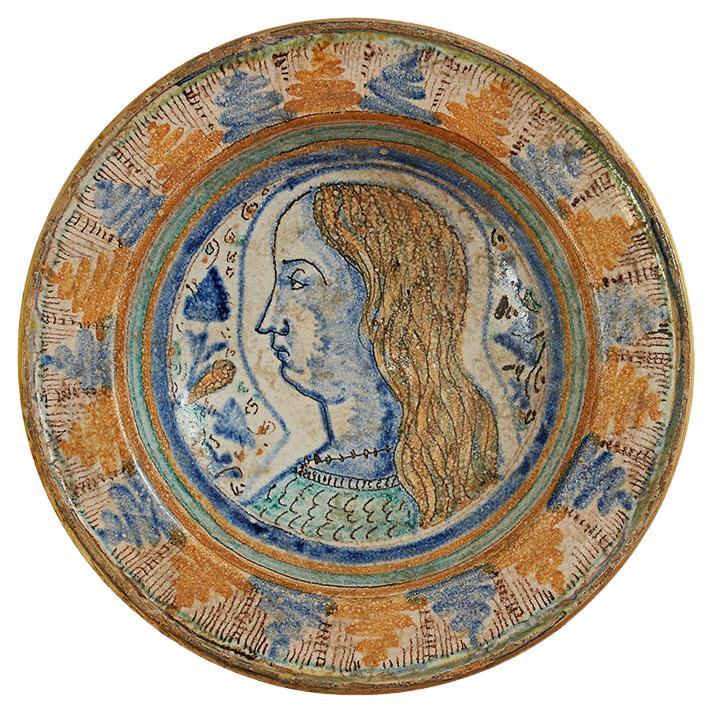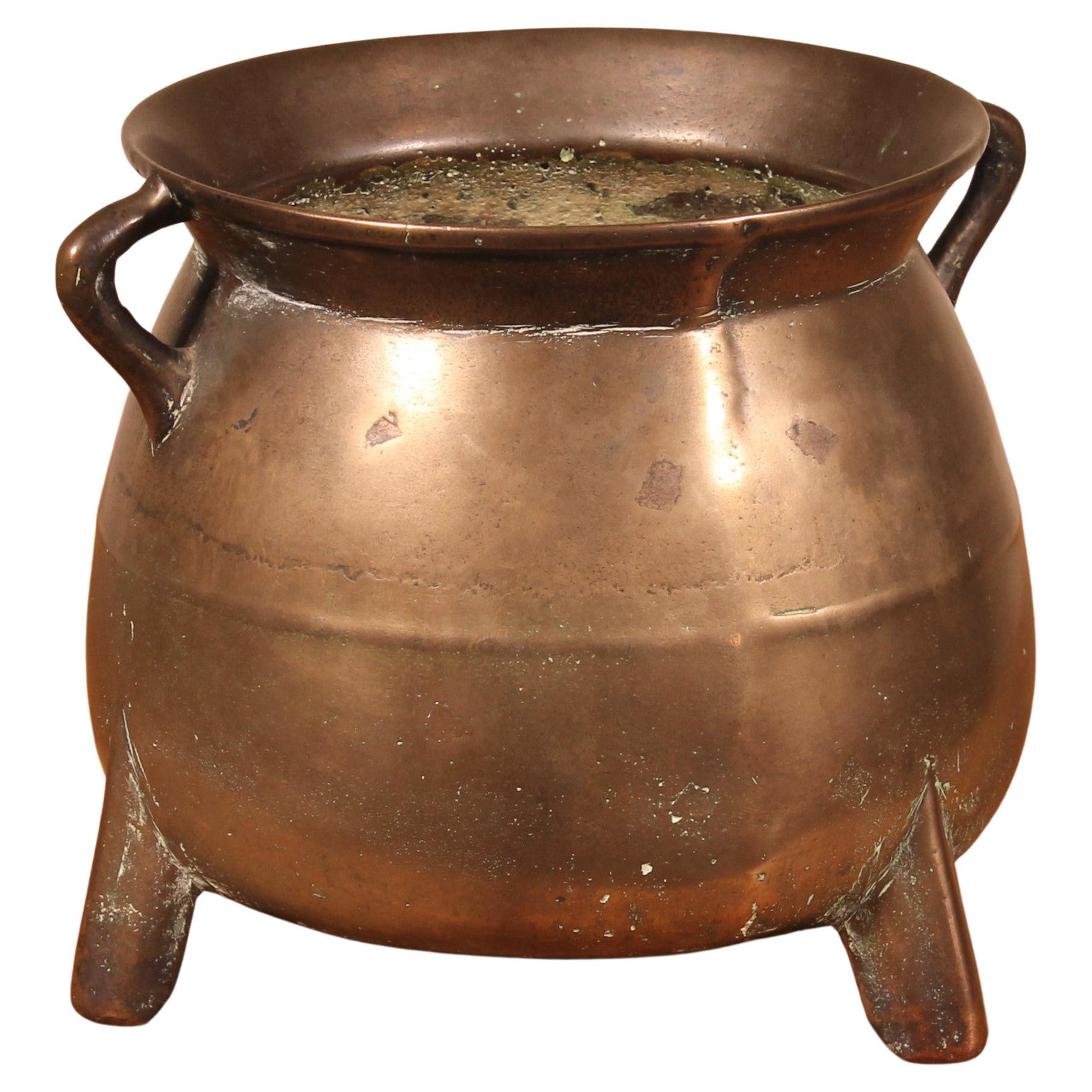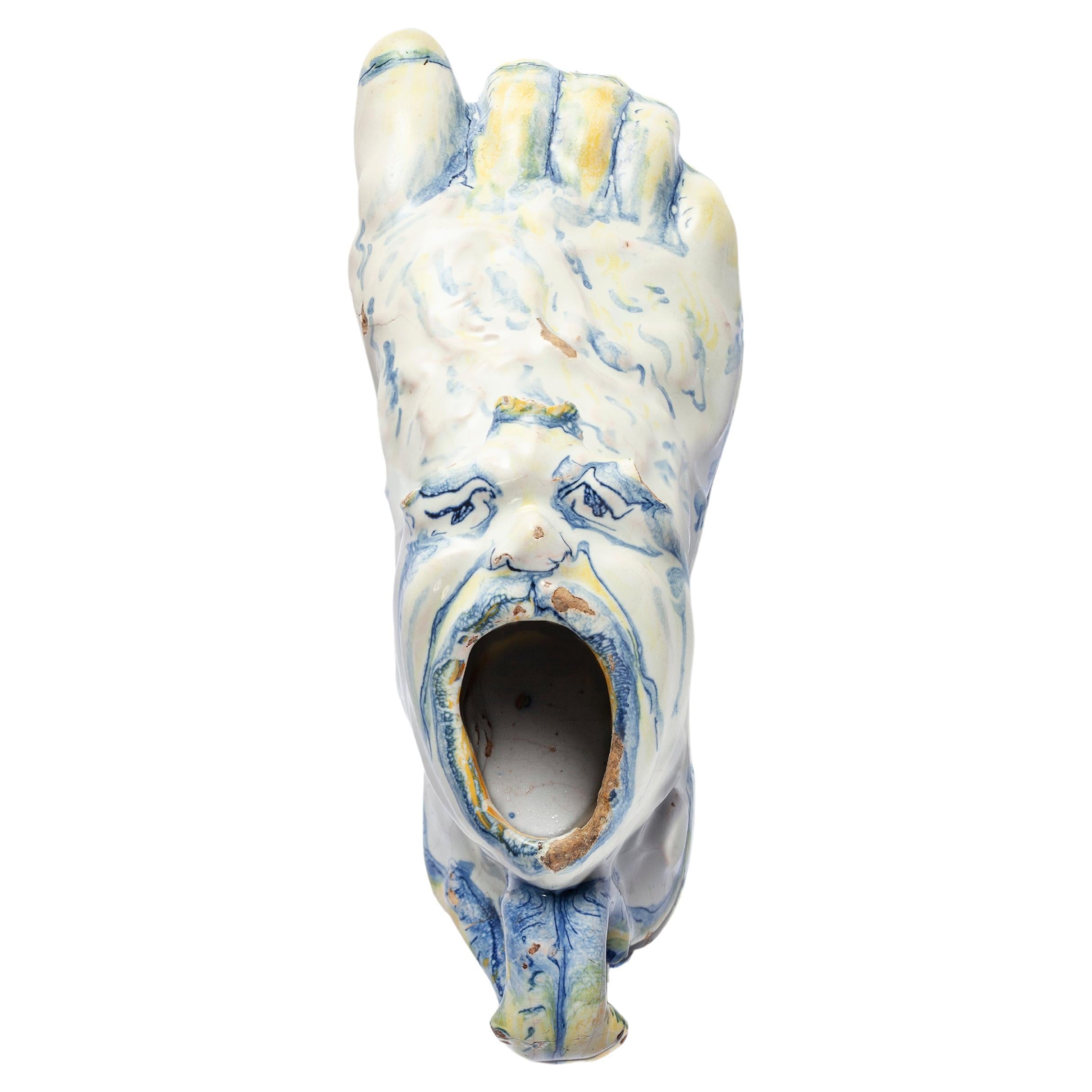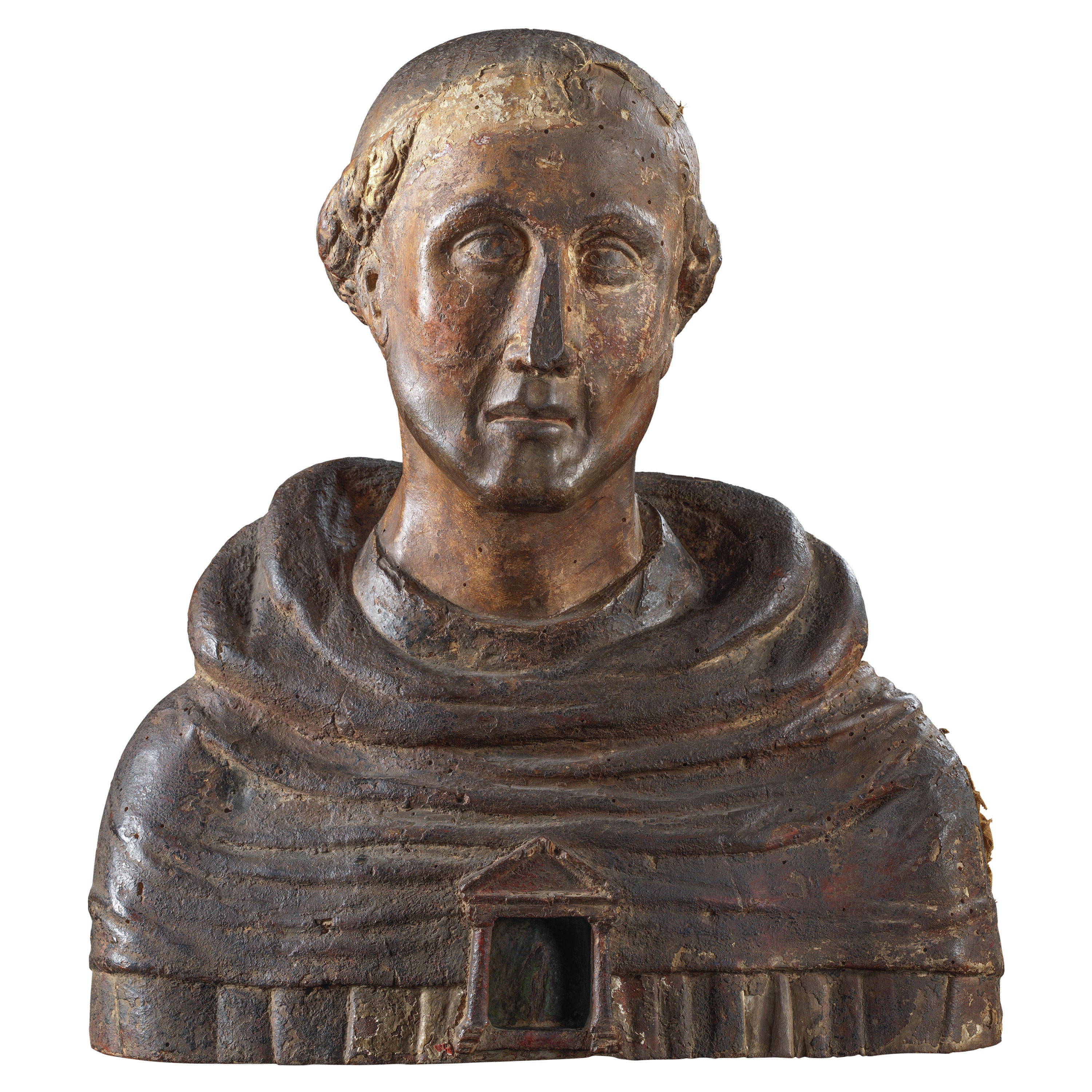Items Similar to SECOND HALF OF THE 16th CENTURY POLYCHROME MAIOLICA PLATE
Want more images or videos?
Request additional images or videos from the seller
1 of 12
SECOND HALF OF THE 16th CENTURY POLYCHROME MAIOLICA PLATE
About the Item
Splendid plate in polychrome glazed majolica in yellow, blue, green and manganese. The plate has a wavy rim which gives it the name "crespina", and in the center it is adorned with the figure of a cupid, a winged “putto” armed with a shield and bow with arrow. Along the edge there are griffins depicted, mythological creatures that further enrich the decoration. The rim itself has also been finely enamelled in yellow, with thin parallel brown stripes. The bottom has a ring base. This majolica plate is an object of great historical value, capable of giving a touch of history and elegance to any environment. Its manufacturing dates back to the workshops active in Faenza in the mid-second half of the 16th century.
Measurements: DM rim x DM bottom 23 x 10cm
- Dimensions:Height: 9.06 in (23 cm)Diameter: 3.94 in (10 cm)
- Style:Renaissance (Of the Period)
- Materials and Techniques:
- Place of Origin:
- Period:
- Date of Manufacture:1550
- Condition:Wear consistent with age and use. We remind you that the authorization of the Fine Arts is required for export.
- Seller Location:Firenze, IT
- Reference Number:1stDibs: LU7189239608182
About the Seller
5.0
Vetted Seller
These experienced sellers undergo a comprehensive evaluation by our team of in-house experts.
1stDibs seller since 2022
13 sales on 1stDibs
Typical response time: 1 to 2 days
- ShippingRetrieving quote...Ships From: Firenze, Italy
- Return PolicyA return for this item may be initiated within 1 day of delivery.
More From This SellerView All
- 16th CENTURY GUARD'S STOOLLocated in Firenze, FITypical stool with backrest and curved legs in solid walnut wood with dark patina. This type of bench is used in guard posts, for this reason the seat is small and uncomfortable, to ...Category
Antique 16th Century Italian Renaissance Stools
MaterialsWood, Walnut
- END OF THE 15th CENTURY SMALL HAND WARM BRAZIERLocated in Firenze, FIThis small hand-warming brazier from the Renaissance era in wrought iron is a handcrafted object of great value, handmade with care and precision. The origin of this object is attrib...Category
Antique 15th Century and Earlier Italian Renaissance Decorative Bowls
MaterialsWrought Iron
- 16th CENTURY MARBLE SCULPTURE OF A YOUNG HERCULESLocated in Firenze, FISplendid sculpture in white Carrara marble depicting a young Hercules holding the world. Originally, the work was conceived to be used as a caryatid at the beginning of a sumptuous m...Category
Antique 16th Century Italian Renaissance Figurative Sculptures
MaterialsCarrara Marble
- SECOND HALF OF THE 18th CENTURY WALNUT BRIAR CABINETLocated in Firenze, FIBeautiful cabinet with two doors in soft wood, with walnut briar tiles and blonde half-luster finish. The carved decoration is linear and geometric, visible both on the front and on ...Category
Antique Late 18th Century Italian Sideboards
MaterialsNutwood
- SECOND HALF OF THE 19th CENTURY NAPOLEON III'S BAROMETERLocated in Firenze, FIThis beautiful wall barometer with room thermometer is a highly valuable craftsmanship, attributable to French manufacture and dating back to the period of Napoleon III (approximatel...Category
Antique 1860s French Napoleon III Scientific Instruments
MaterialsBronze
- 16th Century Renaissance Florentine ChestLocated in Firenze, FIBeautiful model of chest in carved walnut with features typical of the late sixteenth century in Florence with the addition of parts decorated with grotesque lean tempera on a chalky background. Used as a small travel chest, it is complete with an antique lock...Category
Antique 16th Century Italian Renaissance Cabinets
MaterialsWood, Walnut
You May Also Like
- Bronze Mortar, Tuscany, Second Half of 16th CenturyLocated in Bruxelles, BEBronze mortar with garlands, flowers and putti - Tuscany , second half of 17th century. Measures: height 10 diameter : 13 cm Artisans and healers used mortars for grinding food...Category
Antique 16th Century Italian Renaissance Scientific Instruments
MaterialsBronze
- 16th Century Italian Maiolica Faience Dish with a Young Man PortraitLocated in Milan, ITMid-16th Century Italian Maiolica Dish hand-painted in blue and ocher yellow color with a profile young man portrait in the center. The maiolica col...Category
Antique 16th Century Italian Renaissance Decorative Dishes and Vide-Poche
MaterialsMaiolica
- Bronze Pot, 16th CenturyLocated in Brussels, BrusselsSuperb Flemish Renaissance bronze pot from the 16th century. Superb patina and in very good condition.Category
Antique 16th Century Belgian Renaissance Decorative Bowls
MaterialsBronze
- Renaissance Italian Inkwell Calamelli workshop, Faenza, second half of the 16thBy Virgiliotto CalamelliLocated in Milano, ITInkwell Calamelli workshop (attr.). Faenza, second half of the 16th century Height 4.33 in; length 8.07 in; depth 2.95 in (11 cm; 20.5 cm; 7.5 cm) Weight: 0.800 lb (363 g) State of conservation: some chipping to the top of the mask around the mouth. Handle glued, without any restorations; minor chips in some raised areas. This object has the shape of a foot wearing Greek-style footwear, as can be seen in some raised areas. The foot is anatomically modeled with bare toes, while the ankle is partially covered by the footwear. On the heel, there is a small circular handle to support the object. The mouth of the container is shaped like a mask. The interior, completely enameled, suggests that the piece was intended to be used as an inkwell or to contain some other liquid. The base, however, is not enamelled. The painted decoration, scant and brief, consists of rapid cobalt blue shading between the toes of the foot, with more precise emphasis on the nails. It is accompanied by yellow citrine accents to enhance the forms. The mask is painted with the tip of the brush, to accentuate the tense nature of the eyes and to accentuate their outline. Thin strokes of yellow-orange line the interior of the mouth. Since the Renaissance, this decoration has been referred to as "compendiaria" and it characterizes the period of production extending from the mid-16th century to approximately the middle of the following century. It significantly influenced tastes at the time. It evolved from the polychrome style "istoriato" and transformed into a new style that "summarized" (compendia), or condensed, the ornamentation of the works into a few colors, placing greater prominence on the shapes. It was often inspired by metal specimens. Since the Renaissance, this decoration has been referred to as "compendiaria" and it characterizes the period of production extending from the mid-16th century to approximately the middle of the following century. It significantly influenced tastes at the time. It evolved from the polychrome style "istoriato" and transformed into a new style that "summarized" (compendia), or condensed, the ornamentation of the works into a few colors, placing greater prominence on the shapes. It was often inspired by metal specimens. This artwork finds parallels in similar objects all characterized by this refined style and produced in the city of Faenza and other Italian centers starting from the mid-16th century. The closest comparable example in majolica is a foot acquired by the British Museum in 2011 (inv. 2011, 8008.1). This was previously published by Carmen Ravanelli Guidotti in 1996 and later by Dora Thornton in 2016 during the conference on Renaissance ceramics...Category
Antique 16th Century Italian Renaissance Inkwells
MaterialsMaiolica
- Brazier, Copper, Possibly Castile, 16th CenturyLocated in Madrid, ESBrazier. Copper. Possibly Castile, 16th century. Brazier made of copper with a circular foot decorated with vertical bands, a low tubular shaft enhanced with a fine roped molding and a semicircular body, with a wide mouth that flares outwards, and two halfrectangle-shaped metal handles with a torso part on the sides. Of the piece. These types of pieces were used both in civil and ecclesiastical interiors with the aim of heating the occupants of the room as much as possible, and their conservation is rare because they are utilitarian elements that were discarded over time or due to be damaged They used to be objects destined for the upper class, and followed the same typologies whether they were destined for a sacristy or a private residence. This case, possibly intended for use in the sacristy, shows a typical typology in the Spanish school of the time. Compare, for example, with the brazier present in The Birth of the Virgin Mary of the Altarpiece assembled around 1520 by Pedro de Guadalupe from Valladolid and found in the church of San Esteban...Category
Antique 16th Century Spanish Renaissance Fireplaces and Mantels
MaterialsCopper, Other
- 16th Century Polychrome Reliquary of a MonkLocated in Saint-Ouen, FRThe monk is depicted with an oval face, marked with high and strong cheekbones, sunken cheeks, strong jawbones and a cleft chin. His almond shaped eyes are opened under very strong a...Category
Antique 16th Century Italian Renaissance Busts
MaterialsWood
Recently Viewed
View AllMore Ways To Browse
Second Hand
Second Hand Furniture
Used Second Hand Furniture
Antique Second Hand
Antique Thins
Antique Furniture Second Hand
Antique And Second Hand Furniture
Second Hand Used Bedroom Furniture
Antique Creature
Mid Century Enamel Plate
16th Century Plate
Polychrome Glaze
Polychrome Plates
Arrow Base
Bow Arrows
Arrow Bows Used
Italian Antique Baskets
Polychrome Basket





